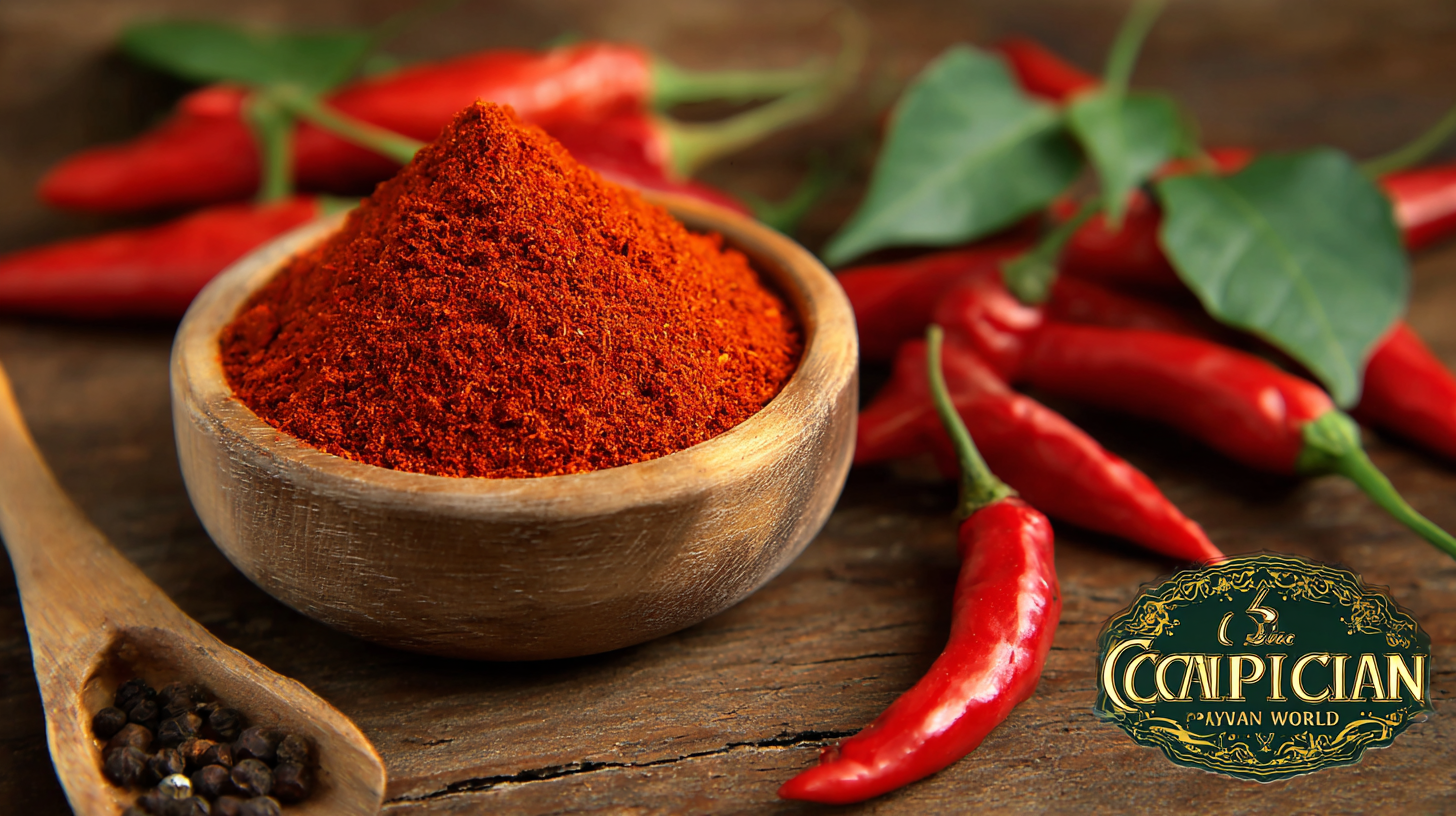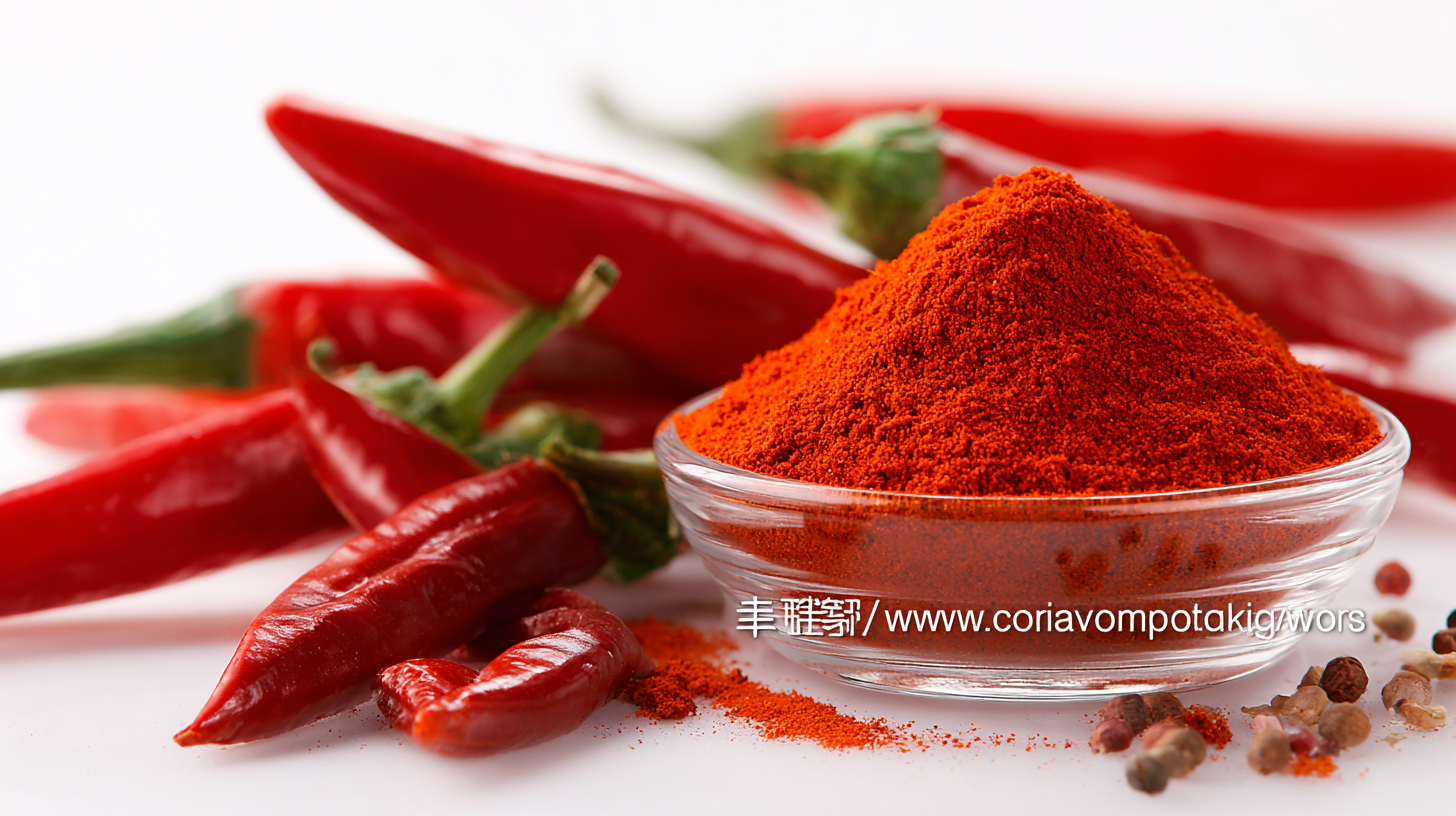As the global demand for high-quality ingredients continues to surge, particularly in the food and pharmaceutical sectors, China's manufacturing capabilities are stepping into the spotlight. According to a recent report by Research and Markets, the global capsaicin market is projected to grow at a compound annual growth rate (CAGR) of 5.2% from 2021 to 2026, driven largely by the increasing utilization of Pure Capsaicin Powder for its health benefits and culinary applications. With its rich agricultural resources and advanced production techniques, China stands poised to be the leading supplier of Pure Capsaicin Powder worldwide. By harnessing innovative manufacturing processes and adhering to stringent quality standards, Chinese manufacturers are not only enhancing product purity and potency but also establishing themselves as trusted global partners in the supply chain.

The production of pure capsaicin powder in China has gained attention for its potential to enhance food products globally. However, quality control remains a critical challenge. As highlighted in recent news regarding product recalls due to excessive spice levels, manufacturers must ensure that their output meets international safety standards. Data from industry reports indicate that the global market for capsicum-derived products is expected to reach $1.2 billion by 2025, spurring a surge in production and the consequent need for stringent quality protocols.
Quality assurance in the manufacturing process of capsaicin powder is essential, especially considering the varying tolerance levels across different regions. The recent recall incident reveals the potential risks involved when products are not adequately tested for spice intensity before reaching consumers. Regulatory agencies emphasize that producers should adhere to standardized testing methods to mitigate such risks. Data suggest that 70% of food safety incidents stem from poor quality control processes, underscoring the necessity for robust oversight in the capsicum supply chain to maintain both consumer safety and product integrity.
| Quality Control Dimension | Description | Current Challenge | Proposed Solution | Impact |
|---|---|---|---|---|
| Raw Material Sourcing | Ensuring quality and consistency of raw materials used in capsicum extraction. | Varying quality from suppliers leading to inconsistency in final product. | Implement stringent supplier qualification and regular audits. | Higher consistency and reliability of product quality. |
| Manufacturing Processes | Control over extraction and purification processes to ensure high purity levels. | Lack of standardized processes can lead to quality deviations. | Develop and implement ISO-certified manufacturing protocols. | Assured higher purity and quality in final products. |
| Quality Assurance Testing | Regular testing of product batches for purity and potency levels. | Inconsistent testing protocols lead to lack of accountability. | Establish a dedicated quality assurance lab with trained personnel. | Improved confidence in product quality from customers. |
| Regulatory Compliance | Adherence to international regulations for food additives. | Complexity in meeting different global regulations. | Invest in compliance training and hire experts in regulations. | Better access to international markets and increased sales. |
The global market for capsaicin powder, derived from chili peppers, has witnessed significant growth due to its vast applications ranging from food products to pharmaceuticals. As China emerges as a leader in quality manufacturing, the economic impact of capsaicin production expands beyond borders. With advanced agricultural practices and state-of-the-art processing facilities, Chinese manufacturers are not only meeting the rising demand but also enhancing the quality of pure capsaicin powder. This elevation in production standards significantly affects pricing, accessibility, and the overall competitiveness of the global capsaicin market.
Moreover, the economic influence extends to various sectors benefitting from capsaicin’s properties. In the food industry, the increasing incorporation of capsaicin as a natural flavor enhancer is driving consumer interest in spicy products, ultimately benefiting producers and retailers alike. The pharmaceutical realm joins the trend, with capsaicin being recognized for its pain-relieving properties, further amplifying its market potential. As China strengthens its capacity in capsaicin production, it not only positions itself as a dominant supplier but also cultivates a ripple effect that nurtures innovation and growth in ancillary markets around the world, reshaping the landscape of international trade in specialized food and health products.
The following bar chart illustrates the global production of capsaicin powder from China and its economic impact on the worldwide market over recent years. The data reflects the production volume in metric tons and the estimated market value (in millions USD). This shows the increasing importance of capsaicin in various industries including food, pharmaceuticals, and cosmetic products.
When it comes to exporting pure capsaicin powder from China, understanding regulatory compliance issues is crucial for both manufacturers and importers. Each country has its own set of rules governing the import of food additives and specialty ingredients, which can significantly impact the success of international trade. Navigating these regulations requires a thorough understanding of not only the legal requirements but also the quality standards set by different countries. Failure to adhere to these regulations can result in costly delays, confiscation of goods, or even legal penalties.
In China, producers of pure capsaicin must ensure that their products meet specific safety and quality standards established by local authorities and international guidelines. This includes proper labeling, documentation of purity levels, and adherence to limits on contaminants. Additionally, importers must conduct due diligence to verify compliance with their destination country's regulations, including any certification processes. By fostering strong communication between manufacturers and regulatory bodies, companies can ensure smoother export processes and maintain product integrity throughout the supply chain.
 Supply chain disruptions have posed significant challenges to the global availability and quality of pure capsaicin powder. According to a report by Research and Markets, the capsaicin market is projected to reach USD 1.8 billion by 2025, driven by rising consumer demand for natural food additives and pharmaceuticals. However, recent geopolitical tensions, transport delays, and raw material shortages threaten to undermine this growth. These disruptions have caused fluctuations in pricing and inconsistent quality, which can adversely affect manufacturers' ability to provide high-grade capsaicin.
Supply chain disruptions have posed significant challenges to the global availability and quality of pure capsaicin powder. According to a report by Research and Markets, the capsaicin market is projected to reach USD 1.8 billion by 2025, driven by rising consumer demand for natural food additives and pharmaceuticals. However, recent geopolitical tensions, transport delays, and raw material shortages threaten to undermine this growth. These disruptions have caused fluctuations in pricing and inconsistent quality, which can adversely affect manufacturers' ability to provide high-grade capsaicin.
Furthermore, the sourcing of raw ingredients, primarily from well-established regions in China, is increasingly impacted by stringent regulations and environmental concerns. A study from Grand View Research highlights that the capsaicin extraction process is sensitive to quality control measures. As supply chain bottlenecks become more common, ensuring the purity and potency of capsaicin products is crucial. Consequently, manufacturers must adapt their logistics strategies, opting for diversified sourcing and more resilient supply chains to maintain the expected quality standards in a market that is rapidly evolving.
In today's competitive market, technological innovations play a pivotal role in enhancing the production efficiency and purity of pure capsaicin powder. By implementing advanced extraction techniques such as supercritical CO2 extraction and advanced chromatography, manufacturers can significantly boost the quality of their products. These methods not only preserve the active compounds in capsaicin but also reduce the overall environmental impact, aligning production with modern sustainability goals.

Tips for improving production efficiency include investing in automated systems that streamline the extraction process, as these can minimize human error and increase throughput. Additionally, continuous quality monitoring through in-line sensors can ensure that the purity levels remain consistent throughout the production cycle, ultimately leading to a superior product.
Furthermore, collaboration with technology providers can facilitate the introduction of innovative solutions tailored to specific manufacturing challenges. By leveraging data analytics, manufacturers can gain insights into process optimization, driving both quality and efficiency to new heights. Embracing these innovations not only benefits the manufacturers but also ensures that consumers receive high-quality capsaicin products globally.
